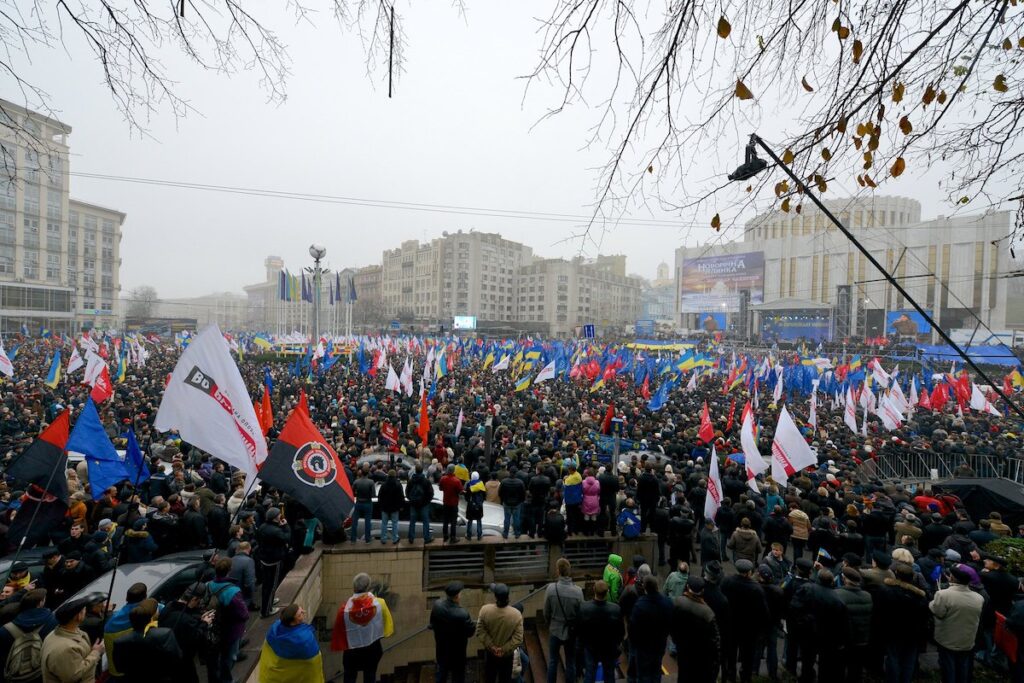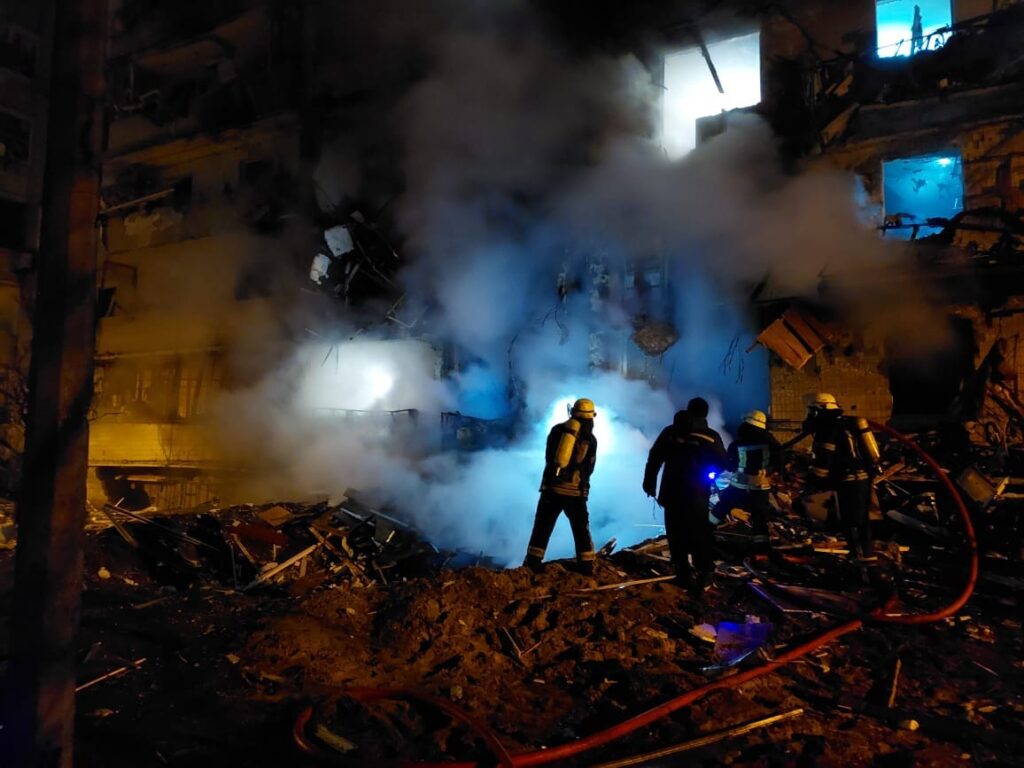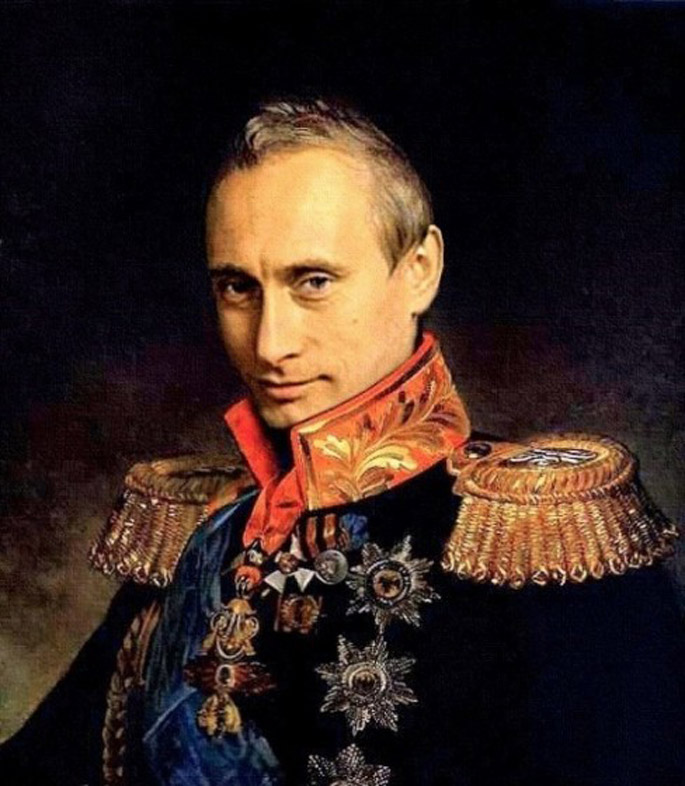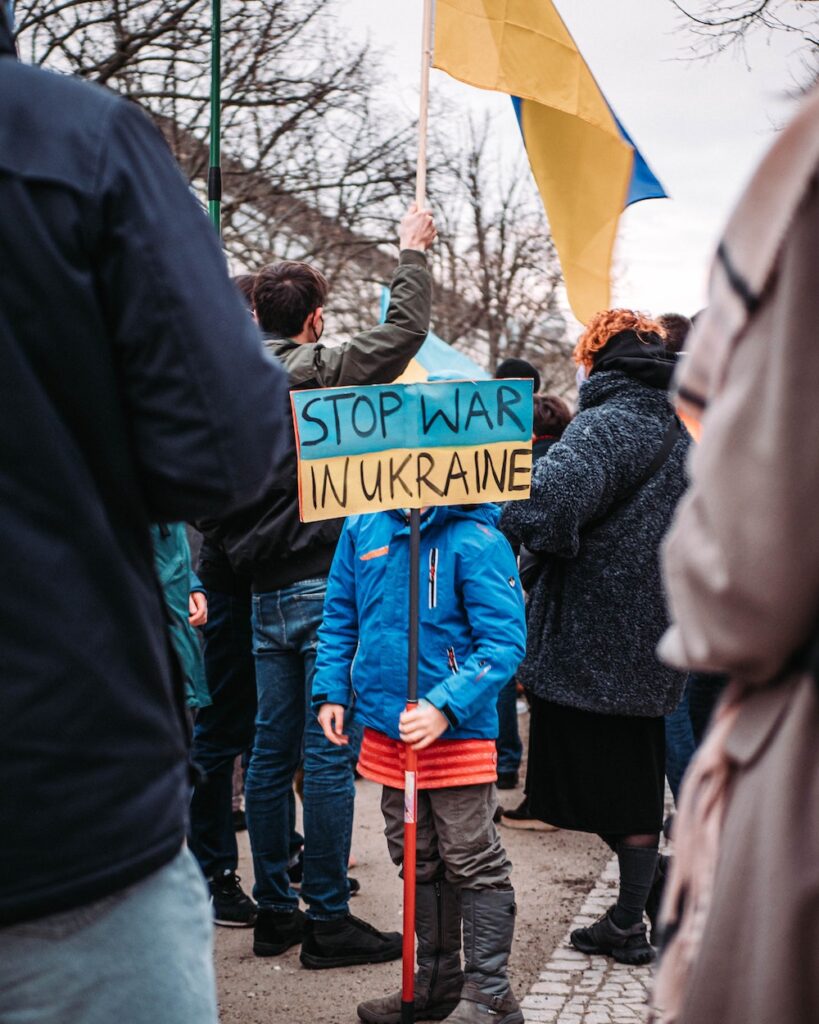“What’s going on inside Putin’s head?” “He’s insane.” Questions and declarations like these pepper discussions of Russia’s invasion of Ukraine. While insanity appears an obvious — albeit broad — diagnosis, particularly to those in the West, even the most delusional psychosis has its internal logics and deep structures. And while we can never really get into someone else’s head, anthropological or psychoanalytic conceits about others’ subjectivity notwithstanding, it may be possible and useful to grasp another’s craziness, if we understand the roots of their version of reality.
Encirclement always loomed large in pre-1917 Russian, Soviet, and then post-1991 Russian imaginaries. Russia experienced four invasions that came through Ukraine — in 1812, 1914, 1919, and 1941. Many analyses point to NATO’s eastward expansion as a proximate cause of today’s crisis, with some viewing it as a tragic historic mistake and others pointing to the invasion itself as a post-hoc justification. What these and other studies almost always miss, however, is that NATO’s expansion is significant because it triggered archaic anxieties dating back to Tsarism. That Ukraine’s constitution enshrines an aspiration to join NATO and the EU did little to allay these historical, though clearly overblown, fears.
Vladimir Putin and I were both born in 1952. Our fathers and uncles fought Nazism on different fronts, his in the Soviet Red Army and mine in the U.S. Army and Navy. The Great Patriotic War certainly overshadowed his childhood, as World War II did mine. Fascism and Nazism, even if defeated before our births, remained a frightening specter. Putin’s family, like most Soviet families and virtually all Leningraders, suffered terribly in the War (Gessen 2013). In my family, one great uncle went missing in the Battle of the Bulge when his assault boat capsized in the Roer River after a reconnaissance mission behind enemy lines (the Army confirmed his death five years later, but never recovered his remains). My father and other uncles returned with horrifying stories, relatively minor injuries, and what we might today describe as PTSD.
Unlike almost all Americans but like quite a few New Yorkers of my generation, as a child I knew many more Communists and ex-Communists than I did Republicans. Later, in 1986, as an exchange scholar in the Soviet Union, I had many conversations with young university students who were suffering through the soporific required course on “Nauchnyi Kommunizm” (“Scientific Communism”) and with a more ideologically zealous or simply opportunistic subset of these who were majoring in Istoriia KPSS (History of the Communist Party of the Soviet Union — yes, that was an important, if soon to be useless, undergraduate major). So, between growing up among red and pink diaper babies in 1960s New York (Freeman 2001) and my brief but intense sojourn in the USSR (Edelman 1996), I have some sense of the emotional valence that attaches to encirclement in the minds of those socialized in orthodox Communist worldviews.
The Russian inferiority complex vis-à-vis the West is a longstanding, hackneyed trope in writing on geopolitics. What is frequently forgotten is that Russia — or its upper classes at least — also had an inferiority complex in relation to the East. Japan, a rising power in Asia, trounced the Russian Empire in their 1905 war. This was a huge blow to the narcissism of the Russian nobility and elites, who not long before had conquered most of Central Asia and imagined themselves as part of European civilization, ipso facto superior to those “lesser” peoples of the East.
Russia’s performance in World War I was little better than it had been against the Japanese and the near collapse of its military was part of the maelstrom that led to the 1917 Bolshevik Revolution and Soviet Russia’s withdrawal from the War. In the immediate aftermath of the Bolsheviks’ seizing power, more than a dozen foreign armies invaded Russia (Ullman 2019) and fought with the Whites against the Reds in a bloody Civil War that only ended in 1920. These mostly small interventions didn’t make much difference militarily, but the memory seared into Soviet and later Russian collective consciousness, fueling a siege mentality. Soviet (and western) Communists would self-righteously point to this long after as a key reason why the USSR had to be vigilant and maintain strong defenses.
Towards the end of the Civil War, in 1919-20, the Red Army launched a separate campaign out of Russia’s northwest that tried to spread Bolshevism to Belarus, Lithuania, and newly independent Poland. While this complicated conflict aimed in part at opening a Red corridor to Germany, where the military crushed a Communist uprising in 1919, Polish resistance at Warsaw turned back the Bolshevik advance. Isaac Babel’s (2006) memoir Red Cavalry , reports that in one of the last battles, “The enemy machine-guns were firing from twenty paces away, and men fell wounded in our ranks. We trampled them and attacked the enemy, but his square did not falter; then we ran for it.”
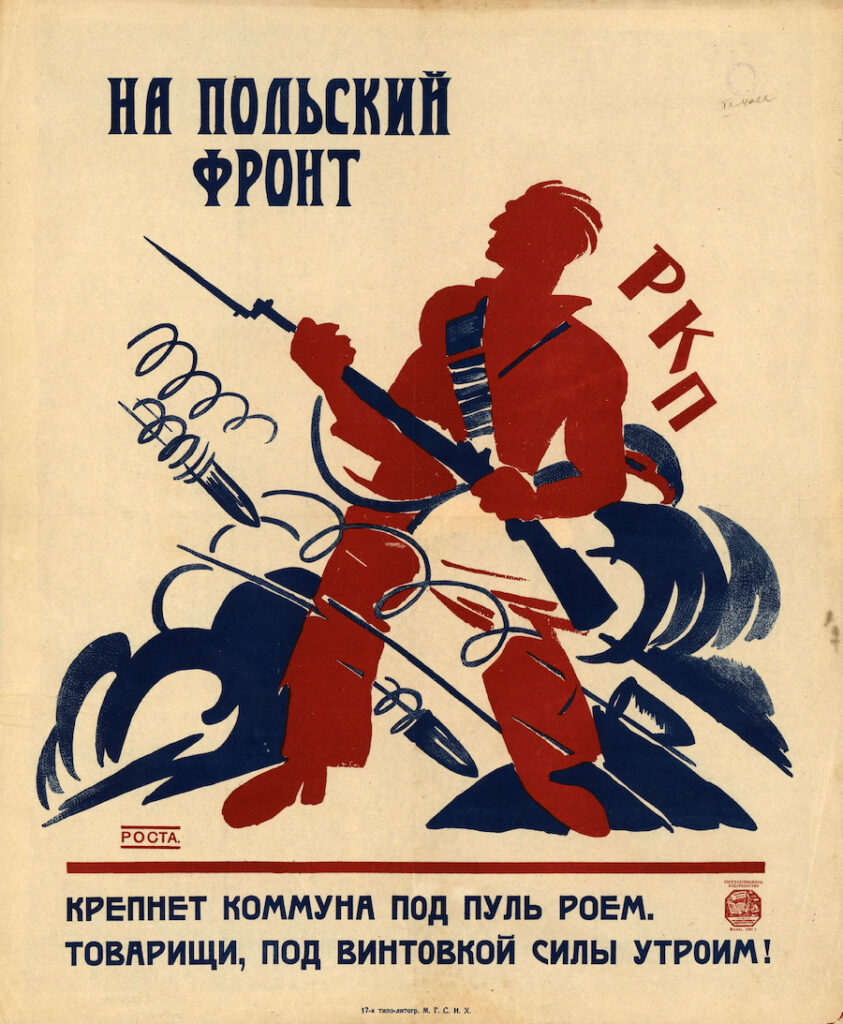
The 1939-40 ”Winter War” with Finland barely went better. Ignited with a Soviet invasion that aimed at grabbing a wider buffer zone between Leningrad and the border, the conflict ended with some minor Finnish territorial concessions and a humiliating Soviet defeat inflicted by agile ski troops in white camouflage uniforms. Hitler was watching, and many historians attribute his fatal 1941 decision to invade the USSR to a belief that if the Finns could thrash the Soviets, the Germans certainly could too.
The Red Army, of course, was key to defeating the Nazis, but it did so at tremendous cost. Soviet casualties in most battles were many multiples of German ones and the country lost as many as 27 million citizens, between military and civilian fatalities. The sacralized state-managed memory (Markwick 2012) of the Great Patriotic War and the victory over Nazism became the pivotal legitimating narrative in the post-Stalin USSR. This was even more the case for post-Soviet Russia, when the state pushed War-related patriotism to plug what Putin called the “ideological vacuum” left by the collapse of communism.
Many Ukrainians understand this narrative in different terms. Stalin’s collectivization of agriculture in the 1930s hit Ukraine especially hard, with a planned famine in which at least 3.5 million peasants died of starvation. Not surprisingly, many Ukrainians came to despise and distrust Russia.
After Hitler’s 1941 invasion of the USSR some 250,000 Ukrainians joined the Wehrmacht and Waffen SS or served as concentration camp guards (millions, of course, fought in the Red Army) (Khromeychuk 2016). Some Ukrainian nationalists today glorify Stepan Bandera and other pro-Nazi fighters. Statues of these loathsome figures dot today’s Ukraine (as they do upstate New York, not far from where I live). The Azov battalion, a far-right militia that attracted foreign white supremacists and whose members became part of Ukraine’s military in 2014, figures significantly in Russia’s anti-Ukraine propaganda and in that of the “campist” left in the West, even though its support base is rather paltry (Gomza and Zajaczkowski 2019).
Putin sees today’s Ukrainian nationalists as progeny of the enemy in the Great Patriotic War, an earthshaking event imbued with deep emotion for Soviet and now Russian patriotism. It’s not that fascists and antisemites aren’t worrisome, whatever country they are from. But as VICE reporter Tim Hume pointedly notes, “Ironically, given the Kremlin’s attempts to use Azov’s extremist ideology to smear the Ukrainian forces as a whole, white supremacist foreign fighters also received training and fought for the pro-Russian separatists through groups like the Russian Imperial Movement (RIM), an ultranationalist organisation which claims to be fighting for the ‘predominance of the white race.’”
Ukraine’s despicable far-right and neo-Nazi elements, while theatrically visible at times, are hardly significant in the country’s politics. National Corpus, the Azov-aligned political party, failed to elect a single candidate in the most recent parliamentary elections. The same is true for Right Sector, another pro-fascist party. The extreme nationalist Svoboda (Freedom) Party has one representative. Vox in Spain, Rassemblement National in France, Alternative für Deutschland in Germany, or the Republicans in the United States have vastly more support. After a Russian attack damaged the Holocaust memorial at Babyn Yar, where the Nazis massacred 33,771 Jews in two days in 1941 and some 70,000 more Jews and others during the rest of their occupation, Ukrainian President Volodymyr Zelensky — from a secular Jewish family — seethed with anger as he accused Russia of “killing Holocaust victims for the second time.” These are not the words of the head of a “neo-Nazi” state.
Putin’s assertion that Ukraine is suppressing Russian language is equally risible, especially given how the USSR actively Russified its non-Russian republics. In practice, most Ukrainians are bilingual and in rural zones many speak a mix of Ukrainian and Russian known as Surzhyk. The country did pass a law making the use of Ukrainian mandatory for public sector workers, but Zelensky, then a presidential candidate, opposed it, has failed to enforce it, and frequently uses Russian when he addresses domestic and international audiences.
Masha Gessen’s (2013) biography of Putin depicts a prickly, thin-skinned, and pugnacious boy and young man who then and later cultivated a reputation as a brawler and thug. Recent accounts highlight his isolation during the COVID-19 pandemic and the way he has surrounded himself with sycophants and “yes-men.” Like Stalin, he rises late and often works into the wee hours of the morning.
Since the USSR’s collapse, Russia has consolidated control inside, with two wars in Chechnya, and relentlessly expanded outside, annexing Crimea (2014) and carving out bogus “republics” that it controls in Transdniestria (Moldova, 1992), Abkhazia and South Ossetia (Georgia, 2008), and Donetsk and Luhansk (Ukraine, 2014). In Putin’s embittered and aggrieved mind these military conquests, which — like its backing for Assad in Syria and today’s invasion of Ukraine — exhibited a total indifference to human life and international norms, were necessary steps to buffer Russia’s heartland against foreign attack.
The first Cold War was never really “cold” and this one isn’t either. Russia’s invasion of Ukraine is unfolding in a context where the binding treaties and security architecture that regulated East-West competition have mostly unraveled. When the United States withdrew from the Intermediate Nuclear Forces Treaty in 2019, a few isolated voices warned that this was hugely destabilizing. Now both sides have deployed these previously banned weapons, including U.S. missile interceptor launchers in Poland. In 2020-21 the United States and then Russia withdrew from the Open Skies Treaty. The Conventional Forces in Europe Treaty died a slow death, marked by eight years of reduced Russian compliance and finally withdrawal in 2015. The 2010 New Strategic Arms Reduction Treaty is the only remaining treaty limiting U.S. and Russian nuclear arsenals and it expires in four years, which is not enough time for negotiating a new agreement, especially when a “hot” war is ongoing.
The late Viktor Kremenyuk — Russian, though born in Odessa and with a Ukrainian surname — was for many years one of the Soviet Union’s and Russia’s leading academic experts on the United States. A decade ago, in a paper on international negotiations, he remarked that, “In the long run much will depend on the psychological framing of the activities of negotiators and their ability to prove to national decision-makers that negotiable solutions are ‘not worse’ than unilateral ones and may be even better” (Kremenyuk 2011)
Kremenyuk also observed, with eerie prescience given the current situation and Putin’s nuclear saber-rattling, “In a democracy the processes that shape the negotiation behavior and changes in position are totally different from those in a totalitarian system where very often one person decides the final shape of the position of the nation. It also depends on the tradition and previous experience of the nation.”
This does not augur well for efforts to restore peace and stability in Europe or to rein in the squandering of vast resources on military budgets. The renewed love affair on both sides with fossil fuels further delays urgent transformations of the energy matrix needed to avert climate catastrophe.
Americans are famously amnesiac about the past, but in Ukraine and Russia historical memories have a long arc and terrible contemporary resonance. They are the background conditions for an unfolding confrontation that can only bring more tragedy to a region that suffered massively in the twentieth century and, in the worst case, to the entire world.
Marc Edelman is professor of anthropology at Hunter College and the Graduate Center, City University of New York. Many years ago, he held an IREX fellowship at Columbia University’s W.A. Harriman Institute for Advanced Study of the Soviet Union and did research in Tashkent and Moscow on Soviet-Latin American relations.
References
Babel, Isaac. 2006. Red Cavalry and Other Stories. Penguin Classics.
Edelman, Marc. 1996. “Devil, Not-Quite-White, Rootless Cosmopolitan: Tsuris in Latin America, the Bronx, and the USSR.” In Composing Ethnography: Alternative Forms of Qualitative Writing. AltaMira Press.
Freeman, Joshua B. 2001. Working-Class New York. Life and Labor Since World War II. The New Press.
Gessen, Masha. 2013. The Man Without a Face. The Unlikely Rise of Vladimir Putin. Riverhead Books.
Gomza, Ivan and Johann Zajaczkowski. 2019. “Black Sun Rising: Political Opportunity Structure Perceptions and Institutionalization of the Azov Movement in Post-Euromaidan Ukraine.” Nationalities Papers 47 (5), 774-800
Khromeychuk, Olesya. 2016. Ukrainians in the German Armed Forces During the Second World War. History. The Journal of the Historical Association 100 (343), 704-724
Kremenyuk, Victor. 2011. “Ideal Negotiator: A Personal Formula for the New International System.” In Psychological and Political Strategies for Peace Negotiation. Springer.
Markwick, Roger D. 2012. “The Great Patriotic War in Soviet and Post-Soviet Collective Memory.” In The Oxford Handbook of Postwar European History. Oxford University Press.
Ullman, Richard H. [1961] 2019. Anglo-Soviet Relations, 1917-1921, Volume I. Intervention and the War. Princeton University Press.
Cite as: Edelman, Marc. 2022. ”Encirclement: Historical Roots of Putin’s Paranoia.“ FocaalBlog, 18 March. https://www.focaalblog.com/2022/03/18/marc-edelman-encirclement-historical-roots-of-putins-paranoia/
